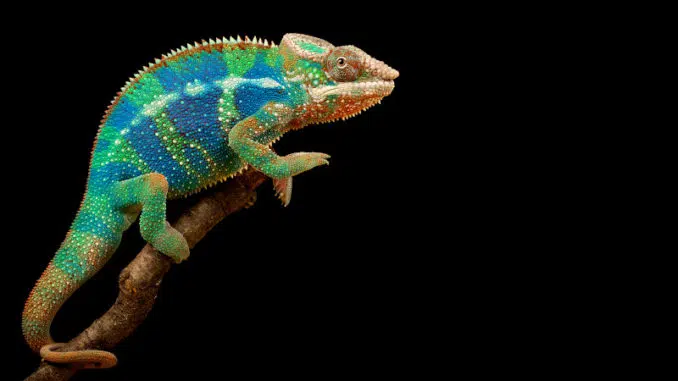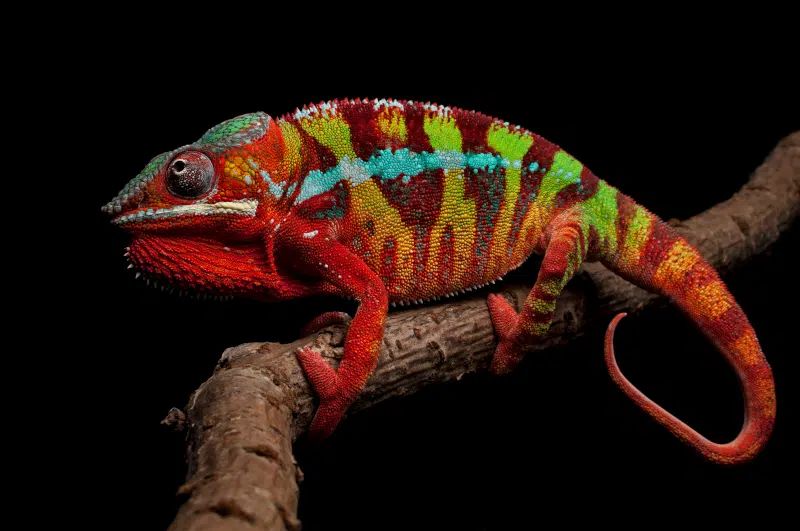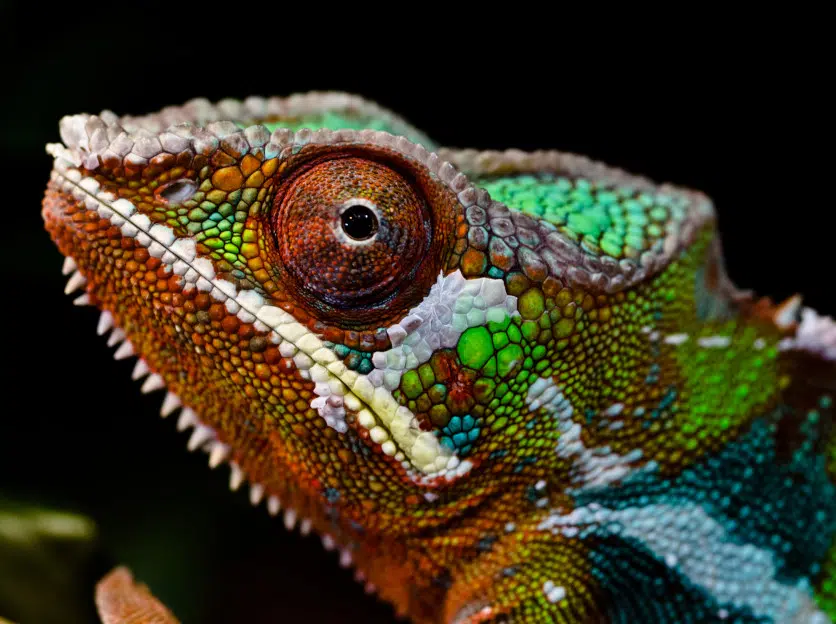
When we change clothes, it’s for the pleasure of wearing what we like, playing sports or dressing up. The chameleon makes fun of fashion or carnival, if it changes skin color, it is for more primary reasons. Green, brown, yellow, but also blue or pink, the chameleon is the undisputed master for changing skin. But how does it work?
The skin of the chameleon, a skin like no other.
It’s impossible for us to see it with the naked eye, but the chameleon’s skin is made up of two thick, superimposed layers of cells containing tiny crystals. There are cells called chromatophores. They contain small bags of pigments responsible for the different colors of the chameleon. And there are also iridophores that can intensify the color. These crystals come in different sizes and shapes and are organized differently in the skin of the chameleon.


Depending on whether the chameleon is relaxed or nervous, these small crystals change places very quickly. This rapid change of position implies a change of color.
For example, when it is relaxed, the small crystals are close to each other. The color that is reflected at this time is blue. On the other hand, if a rival male arrives, he becomes angry, which causes these crystals to move away in his skin, and the light which is emitted tends towards red.
The second, deeper layer is not used to change the color of the skin. These cells are used to reflect heat so that the chameleon can stay cool, according to researchers at the University of Geneva.
Do all chameleons change colors?

According to studies held by Professor Milinkovitch of the University of Geneva, only adult males can change color. Why? Much like peacocks, male chameleons use color change to seduce a female. This change also serves to scare away other rival males who would dare to approach the coveted female.
Why does it change color?
For a long time, researchers thought that the chameleon sought to camouflage itself from its predators by merging into its environment. However, the chameleon runs very fast and manages to escape from its predators thanks to its speed which can reach 18 miles/h. It’s Usain Bolt’s speed in the middle of a sprint! Hiding is, therefore, a secondary reason.
Researchers believe chameleons are expressing their mood. I am relaxed, I am angry, I am excited.
The message to other chameleons is therefore very clear!
The chameleon also changes color to adapt its body temperature. Like all reptiles, it is unable to produce its own heat and therefore depends on the sun. To accumulate heat, his skin takes on darker hues. But to cool off, it adopts lighter colors, which reflect sunlight.



